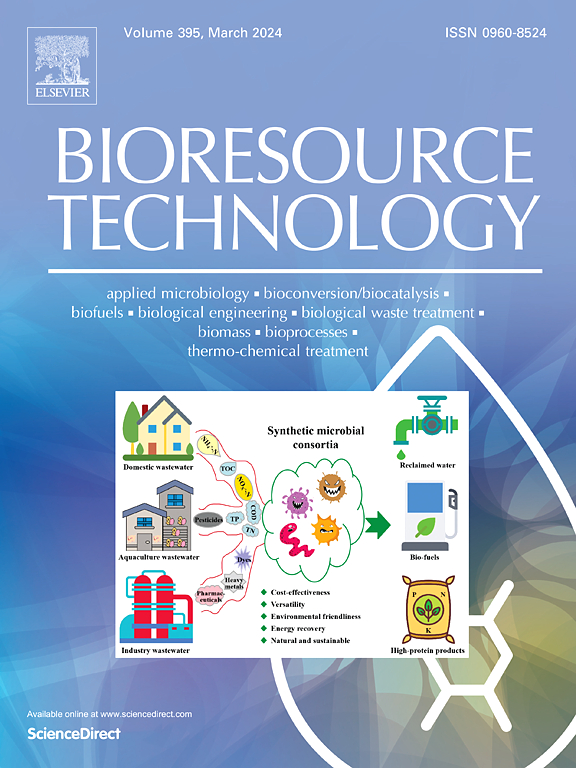Effect of hemicellulose and its-derived products on the recycling and efficiency of biomass fractionation using lactic acid/choline chloride (DES)
IF 9.7
1区 环境科学与生态学
Q1 AGRICULTURAL ENGINEERING
引用次数: 0
Abstract
The recyclability of lactic acid/choline chloride deep eutectic solvent (DES) in lignocellulose fractionation remains challenging. This study demonstrates that DES reuse reduces delignification efficiency, with a residual lignin content of 9.64% after three cycles, resulting in incomplete fiber separation. The molecular weight of dissolved lignin increased, and 2D HSQC NMR revealed reduced β-O-4 cleavage. Accumulated dissolved hemicellulose and its degradation products (e.g., acetic acid, furfural) altered DES properties, increasing viscosity and reducing hydrogen bond basicity, which hindered mass transfer, lignin-carbohydrate complex dissociation, and lignin depolymerization. To address these limitations, activated carbon adsorption (boosting delignification degree to 77%, near fresh DES at 80%) and prehydrolysis (achieving 82% after three cycles vs. 90% for fresh DES) are proposed to remove hemicellulose and its byproducts, minimizing their impact on recycled DES. This study demonstrates the recyclability of DES and proposes two strategies that significantly improve it, ensuring sustainable and efficient biomass fractionation.

求助全文
约1分钟内获得全文
求助全文
来源期刊

Bioresource Technology
工程技术-能源与燃料
CiteScore
20.80
自引率
19.30%
发文量
2013
审稿时长
12 days
期刊介绍:
Bioresource Technology publishes original articles, review articles, case studies, and short communications covering the fundamentals, applications, and management of bioresource technology. The journal seeks to advance and disseminate knowledge across various areas related to biomass, biological waste treatment, bioenergy, biotransformations, bioresource systems analysis, and associated conversion or production technologies.
Topics include:
• Biofuels: liquid and gaseous biofuels production, modeling and economics
• Bioprocesses and bioproducts: biocatalysis and fermentations
• Biomass and feedstocks utilization: bioconversion of agro-industrial residues
• Environmental protection: biological waste treatment
• Thermochemical conversion of biomass: combustion, pyrolysis, gasification, catalysis.
 求助内容:
求助内容: 应助结果提醒方式:
应助结果提醒方式:


